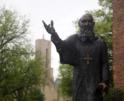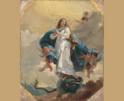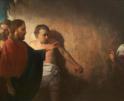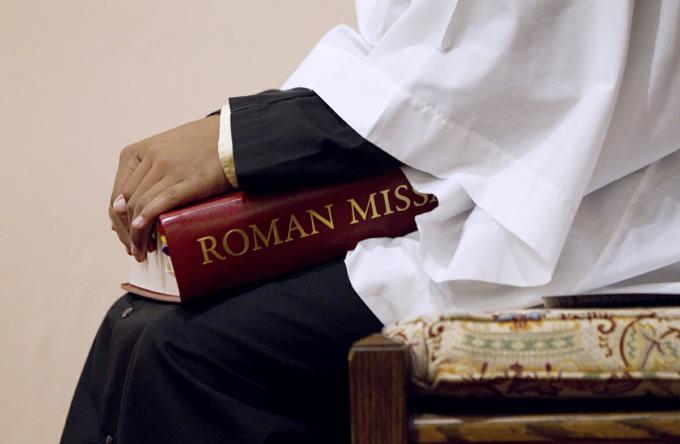
Faith
Prior to the Second Vatican Council, Pope St. John XXIII famously changed the eucharistic prayer by adding the name of his baptismal patron, St. Joseph. Over the centuries, both the shape and the content of the prayer changed and developed.
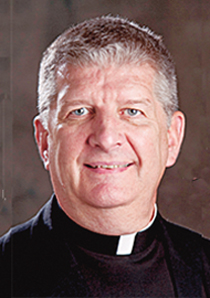
Staff
For more than 14 centuries, the Roman Canon was the principal and, for the greater part of those centuries, the only eucharistic prayer in the Latin Church. Remember, our brothers and sisters in the Eastern Churches have always had a variety of eucharistic prayers.
This prayer was the one used but probably not heard by many at Mass, including by servers who sometimes were challenged by the inaudible praying of some priests and had to supply responses when and where they thought they fit. It was all done very quietly and with everyone facing the same direction as the priest, so most of us were none the wiser.
This eucharistic prayer has undergone the most development or change over the centuries. Prior to the Second Vatican Council, Pope St. John XXIII famously changed it by adding the name of his baptismal patron, St. Joseph.
Over the centuries, both the shape and the content of the prayer changed and developed.
Among those changes is the addition of two sets of saints' names, one set before and another after the Words of Institution. The first set contains names of the Apostles, saints dear to the Roman Church -- her first bishops and martyrs. The second set has some New Testament saints as well as some women martyrs who were also dear to the Romans.
Critics of the revision of the Roman Missal observe that the list is too "Roman" and that, during the reform, the list of saints might have been abbreviated or, on the other hand, expanded with more saints. That second suggestion is fine, but then who gets to choose the saints for the lists? And how long should the lists be?
The prayer also has commemorations: one of the church, where we name the present pope and the diocesan bishop; another for the living, both those assembled in the particular place where the Mass is celebrated, and those who are assembled in faith though not visible to us. In one of the latter two commemorations after the Words on Institution, specific persons may also be named, e.g., the deceased at a Funeral Mass.
Another feature of this prayer is the great variety of prefaces. These are needed since the prayer does not have a preface of its own, or, as it is also called, an invariable preface.
Prefaces are available for the liturgical seasons: Lent, Easter, Advent, and Christmas, and for feasts within those seasons: Ascension, Pentecost, Epiphany and The Baptism of the Lord.
There are also a plethora of prefaces for the saints, including several for the Blessed Virgin on her special feasts, for Sts. Peter and Paul on their June 29 solemnity, and for other categories of saints, which generally permit the insertion of the saint's name in the selected preface.
This prayer is also marked by multiple inserts -- you can impress people with the word "interpellation," which is the more precise word for these inserts.
They are of two kinds: those for feasts and those for particular celebrations.
Among those for a feast that have inserts are for Easter, Ascension, Pentecost, Christmas, and Epiphany. These are in place in the Roman Missal, indicating that they ought to be prayed at the appropriate feast.
Particular celebrations also have inserts, e.g., for the couple at a Nuptial Mass, for the newly baptized and confirmed when those sacraments are celebrated at Mass, and for newly ordained bishops, presbyters, and deacons. These are with the other prayer texts for those respective Masses so using them requires a bit of flipping of pages.
Another difference of this prayer is that it has a narrative of the institution of the Last Supper that is marked by a much more elevated and, some might aver, even imperial, style of language, evident even in English translation. This, in some way, emphasizes both the prayer's Roman nature and its antiquity. It is a very ancient Eucharistic Prayer - but it is not the oldest, as we'll see next week.
Because of its length and its courtly language, it is not used as often as it might be. The great irony is that, of all the eucharistic prayers, it has the most opportunity for variety and adaptation.
Although this prayer did undergo changes over the centuries, Pope St. Paul VI, who personally oversaw most of the changes to the liturgical books following the Second Vatican Council, was extremely reluctant to make any changes to it.
Even if you don't hear this eucharistic prayer often prayed in your parish, you can read it here: catholic-resources.org/ChurchDocs/RM3-EP1-4.htm.
Recent articles in the Faith & Family section
-
Scripture Reflection for Dec. 1, 2024, First Sunday in AdventFather Joshua J. Whitfield
-
Good and bad Sinicization: The future of the Church in ChinaDr. R. Jared Staudt
-
Is Dec. 9 a holy day of obligation this year?Jenna Marie Cooper
-
Our Lady of DeliveranceJaymie Stuart Wolfe
-
The 'month of the dead' brings its own strange refreshmentBishop Robert Reed

